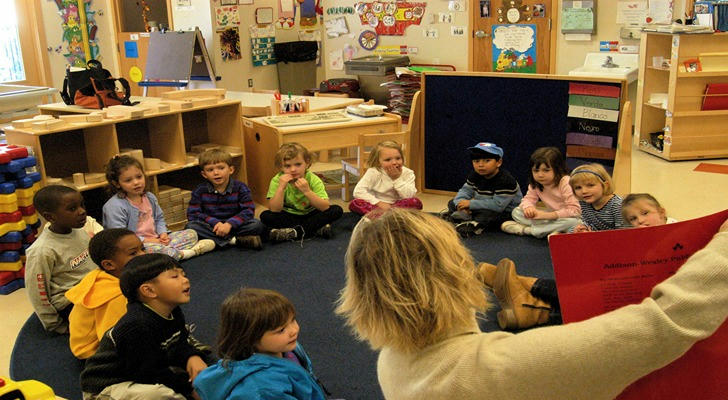## Choosing the Right Preschool Program in the USA: What Parents Need to Know in 2025
Safe environment. Flexible hours. Caring teachers. These are the top concerns for every parent searching for a quality preschool program in the United States. In 2025, with rising costs and growing competition for early childhood education slots, choosing the right preschool or infant daycare is more important than ever.

🌟 Key Benefits of a Quality Preschool Program
✅ Emotional and Social Development
Children who attend high-quality preschool programs tend to show better emotional regulation, cooperation, and empathy. These skills become essential for future academic and personal success.
✅ Age-Appropriate Curriculum
A strong preschool offers structured learning through play, helping toddlers and young children develop language, cognitive, and motor skills. From sensory bins to early math games, these activities are designed to support developmental milestones.
✅ Professional Staff
Top programs employ certified early childhood educators who are trained to understand child behavior, learning patterns, and safety protocols. Many also receive continuing education throughout the year.
✅ Convenience for Working Parents
Look for centers that offer:
Extended drop-off/pick-up windows
Infant daycare starting from 6 weeks old
Meals and snacks included
Clear illness and emergency policies
🧠 What Is "Early Childhood Education"?
Early childhood education refers to formal and informal teaching of children from birth to age 5. It includes infant daycare, toddler programs, and structured preschool classes. This is considered a critical period for brain development.
According to the CDC, 90% of a child's brain develops before age 5. That makes early education more than just babysitting—it's the foundation for lifelong learning.
🏫 Types of Preschool Programs Available
1. Traditional Preschools
Operate on a school-year calendar, offering structured daily routines. Typically enroll children ages 3–5.
2. Infant Daycare Programs
Start as early as 6 weeks old. Focus on safety, nurturing, and sensory stimulation.
3. Toddler Programs
For children aged 1–3 years. Include more group activities and encourage early social skills.
4. Montessori & Reggio Emilia Programs
Focus on child-led learning, exploration, and creative expression. These methods are especially popular in urban areas.
5. Faith-Based Preschools
Offer a curriculum combined with spiritual or moral teachings, often tied to a church or religious organization.
📍 What Parents Should Look For
When searching "preschool near me" or "infant daycare near me," consider these factors:
State Licensing: Confirm the center is licensed by your state’s Department of Human Services or equivalent.
Class Ratios: A lower child-to-teacher ratio ensures more attention for each child.
Staff Background Checks: Reputable centers conduct federal and state background checks.
Open-Door Policy: Parents should be welcome to visit anytime during business hours.
Clean Facilities: Safe play areas, age-appropriate toys, and clear sanitation protocols.
📊 Costs and Enrollment
The average cost of preschool in the U.S. ranges from $9,000 to $15,000 per year, depending on location and services offered. Infant daycare often costs more due to higher supervision needs.
Many programs offer:
Sliding scale tuition based on household income
Part-time or full-time schedules
Meal plans and aftercare options
📈 Long-Term Benefits
Studies show that children who attend quality preschool programs are:
More likely to graduate high school
Less likely to repeat a grade
Better prepared for social and academic challenges
A strong early education can set your child on a path toward long-term success—academically, socially, and emotionally.
✔️ Final Tips for Parents
Visit multiple centers in person
Ask about curriculum, teacher training, and parent communication
Observe classroom interactions
Read recent parent reviews
Don’t delay—many top programs have waitlists
Choosing the right early childhood education program is one of the most important decisions you’ll make. Prioritize safety, developmental support, and staff quality—and your child will thrive in an environment built for growth.
